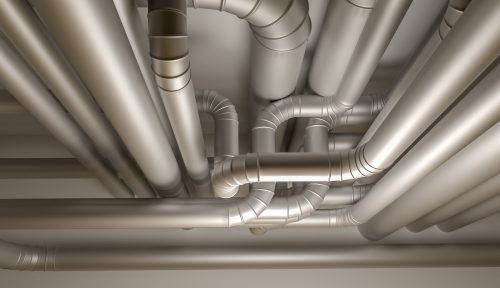Welcome to the Energy Efficiency Myths series from Direct Energy! As many myths arise from incomplete knowledge, they can create seemingly possible answers that many people accept as fact. Each month, we will examine common misunderstandings about energy efficiency — whether it’s in your home or about the energy industry — and deliver real facts behind the myth (and how they they might be costing you money).
Does Ductwork Go Bad?
Let’s say, you’re thinking about installing a new furnace/air conditioning system. You’ve looked at few websites and you’ve noticed quite a few feature this kind of statement:
“If your ductwork is over 15 years old, you probably should replace it. Ductwork has a maximum lifespan of 20-25 years. By 15 years, however, it begins to deteriorate, significantly reducing your HVAC system’s efficiency, so replacement is the prudent option.”
HUH? This has gotta be nonsense, right? My ductwork is all metal —how does that go bad?
Technically, this ‘nonsense’ is really just an oversimplification. More than a few HVAC websites make this claim but don’t really explain just how ductwork can deteriorate over time. So, there is a grain of truth here.
First, let’s be honest. When it comes to homeowners and their home’s ductwork, they just don’t pay a lot of attention to each other. Unless you make a point of annually inspecting your home’s HVAC system, including the duct work, you’re apt to assume that it’s just doing its thing and there’s naught wrong with it. After all, it just lies there and nothing happens to it, right?
Wrong. In fact, your duct work does move and a lot can happen to it. Not that it books an extended vay-cay to Cannes once a year, but your duct work does move around from thermal stress and vibration. To put it another way, winter heating causes the ductwork to expand while summer time cooling causes it to contract. This thermal heaving can pull ductwork and seams apart, causing leaks. In some cases, poorly joined ductwork that is not attached with screws or sealed with mastic or aluminum duct tape will pull itself completely apart. And similar disconnections can happen with the return ducts. so, if you’ve got a return duct running through a crawl space and it pulls apart, then all that lovely dank crawlspace air will be circulated into your living room and your bedroom.
Apart from leaky duct joints, uninsulated metal duct work can rust due to condensation forming on the metal during the summer air conditioning season. Rust can eat holes into the metal and cause leaks or break down connections. Sections that may have been installed without adequate support may sag and buckle and block airflow.
Of course, a home owner can avoid most of these problems by air sealing and insulating older duct work and then periodically inspecting , locating and plugging up any leaks that might develop.
However, it’s not always that simple.
Twists and Turns — Energy Efficiency As any HVAC professional will tell you, the shorter and straighter the duct work runs, the better the air flow. That’s because as air moves through duct work, it can slow down due to friction from running into the inside walls of the duct. If flex duct is used, it should be stretched as much as possible during the installation to reduce the amount spiral ridges for air to run into. Another problem is that curves and bends and spiral ridges cause turbulence in the air flow, which also reduces the airflow’s velocity. In some older homes, the duct work comes out from the HVAC air handler resembling octopus arms, with each branch bending and twisting around each other.
So, too many twists, turns, and even not following installation best-practices can reduce your ductwork’s air movement efficiency. Rooms may not get cool enough in summer or fail to get warm in winter. In that case, the ductwork could need replacing.
Lastly, the main reason you might need to replace old duct work is if you are replacing your 30 year old HVAC system with a new high efficiency unit. First, you’ll need to insist that your HVAC contractor performs a series of Air Conditioning Contractors of America (ACCA) calculations called Manual J and D. Manual J calculation help determine the amount of heat loss or heat gain for each room and the amount of conditioned air needed. Manual D calculations help determine the layout of the ductwork that best balances the air flow requirements with the forces working against it. For example, old duct work might be too small to work efficiently with new HVAC systems due to the higher air flow. These calculations are performed using software programs put out by a variety of companies. Manual J and Manual D calculations are now required by most building codes.
The idea behind these calculations is to prevent installing a new system that is too big for your home or forcing you to buy more equipment than you need. In an age when such calculations can be done easily, quickly, and accurately on a smart phone, why hire a contractor who just uses a rule of thumb? Plus, there are new ductwork best practices to consider:
- Any room that has a supply vent should have a return vent.
- Ductwork should be installed for air returns, not building cavities or joist bays. These leak and they can pull in air from unclean sources such as garages or crawl spaces.
- Ductwork needs to be in the conditioned space. This way, there will be less temperature loss. Similarly, they should run through interior walls.
- Putting them in exterior walls sacrifices space that should be insulated instead.
